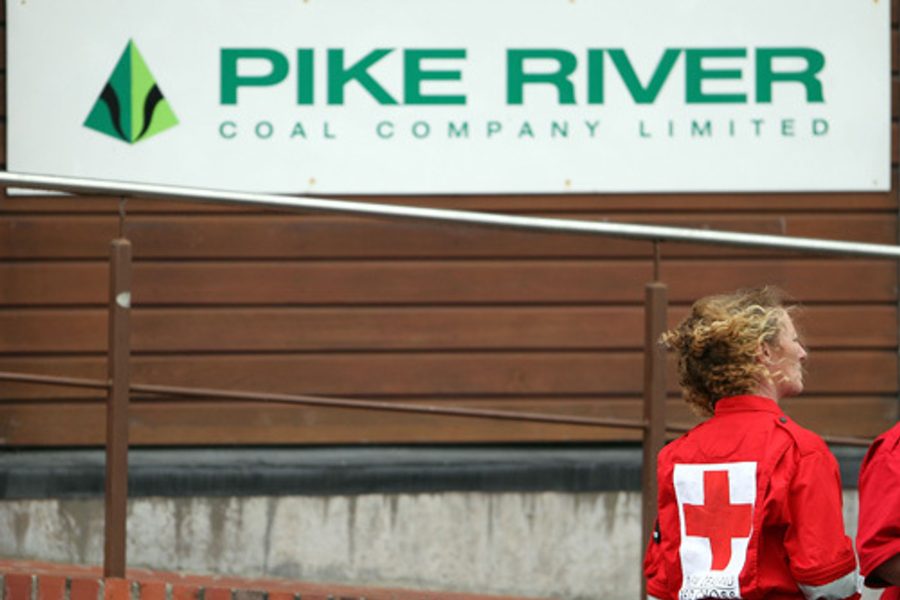
As an explosion sparked an underground coal fire in New Zealand’s Pike River mine yesterday morning, all hope of a Chile-style rescue – or even a speedy recovery of intact bodies – officially ended for the 29 miners trapped in the methane-laced mine.
After a Nov. 19 explosion family members and the public hoped for an encore of the Chilean saga. But a second explosion on Nov. 24, then a third on Nov. 26 and the fourth on Nov. 28 that ignited the still-burning fire have forced the government to admit that the miners are dead; and to launch an inquiry into the safety of the country’s underground mines. This includes the Labor Department’s commissioning of a foreign entity to do safety audits along with likely investigations by other agencies.
As previously noted on this blog, this tragedy underscores the fact that the Chilean rescue was an aberration in an industry that across the globe is rife with fatal and otherwise devastating accidents, not to mention slower-burn but ultimately fatal or debilitating chronic impacts on workers including black lung disease and silicosis.
From the U.S. following the Sago, W. Va. disaster to Chile to New Zealand, tragedies are often followed by government inquiries into mine safety. But critics say such gestures are clearly too little too late, when anyone familiar with the industry or any of the specific mines where accidents occurred could have told government regulators long ago that companies flagrantly ignored safety protocol and best practices in search of profit.
And in countries including China where mining accidents are a near-daily occurrence, they are as likely to be ignored or covered up as thoroughly investigated by government entities and responsible companies.
Coal mining is a billion-dollar industry in New Zealand employing about 6,000 people. New Zealand’s mining industry is considered relatively safe, with 210 deaths in 114 years of mining. But the recent tragedy shows that no country is immune, and coal mining is inherently dangerous work.
In the New Zealand Pike River mine, officials are considering using a jet engine to pump massive amounts of carbon dioxide and nitrogen into the mine (where the miners’ bodies still lie) to suffocate the fire before it can ignite the coal seam itself, which would be disastrous.
During a panel discussion in Chicago the day after the first New Zealand explosion, Jen Gilomen–co-producer and co-director of the film “Deep Down” shown recently on PBS’ “Independent Lens” – noted that protecting workers, nearby communities and the environment often takes a backseat to the promise of jobs and economic infusion unless citizens take an active role in pointing out the multiple and inter-connected impacts of coal.
Gilomen noted that while strip mining is often considered much less dangerous than underground mining, it also involves many fatalities and injuries in the U.S. and elsewhere, including lung disease caused by breathing in rock dust and accidents involving the massive equipment used to remove huge swaths of earth. Deep Down tells a rare story of citizens (in eastern Kentucky) essentially stopping a proposed coal mine. On Dec. 1 there will be an online public viewing and discussion of Deep Down and coal mining.
Meanwhile author and anti-coal activist Jeff Biggers notes that even though the U.S. gets more than half its electricity from burning coal and many so-called “clean coal” plants are in the works, automation has actually meant a marked decrease in coal mining jobs – even as the jobs that remain are arguably as dangerous and dirty as ever.
Despite coal industry claims that coal mining creates lots of jobs, the truth is that coal mining employment has been declining for decades, due to increased use of machinery instead of manpower. In West Virginia alone, coal mining employment has plummeted from 126,000 miners in 1948 (who produced 168 million tons of coal), to just 15,000 miners employed in 2005 (who, with the help of machinery, produced 128 million tons of coal).
Kari Lydersen is a Chicago-based journalist, author and assistant professor at Northwestern University, where she leads the investigative specialization at the Medill School of Journalism, Media, Integrated Marketing Communications. Her books include Mayor 1%: Rahm Emanuel and the Rise of Chicago’s 99%.








